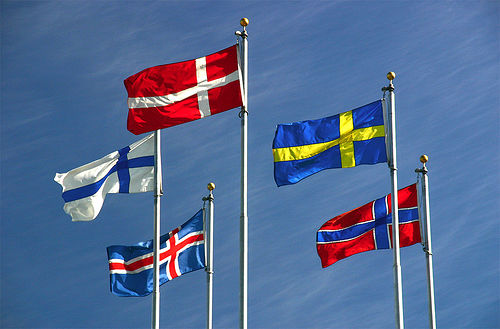
Amidst massive defense cuts and perennial squabbling over burden sharing across NATO, the Nordic countries of Norway, Sweden, Finland, and Denmark have quietly assumed a real leadership role in the transatlantic security relationship. They are making valuable contributions to the Alliance in personnel, strategic vision, operations, and policy. More importantly, they provide a model for how NATO can remain an effective security provider in a future of constrained resources.
NATO Secretary General Anders Fogh Rasmussen is of course a Dane, but Danish influence stretches far beyond the private office at NATO HQ. Denmark was the intellectual architect of the “comprehensive approach,” a construct which now guides NATO’s thinking while operating in complex environments with various kinds of partners and actors and how the Alliance thinks about using political, economic, and military instruments in a concerted fashion while doing strategic planning.
The Nordic countries have also been able to do some real outside-the-box thinking on how to use limited resources to best effect and to work across organizational barriers. Very recently, Sweden (a partner nation) committed its share of flight hours of the C-17 Consortium (a NATO asset) to provide logistical support to the French operation in Mali (a de facto coalition of the willing effort).
Denmark has also proven itself to be a scrappy fighter over the decade. Denmark has sustained the second highest casualty rate of any force provider in Afghanistan (higher than the United States) while deployed in one of Afghanistan’s most restive provinces, and the recent documentary “Armadillo” (available on Netflix), showing Danish infantry in Helmand in close and sustained combat with Taliban forces, provides an important corrective to the notion that European militaries are gun shy.
Denmark and Norway were responsible for a quarter of the air-to-ground attacks generated during NATO’s OPERATION UNIFIED PROTECTOR over Libya last year. That’s an extremely good showing for two small European nations that contributed only sixteen F-16s between the two of them, and should give pause to larger European nations with far larger air forces and get them thinking about how to get more out of limited resources In this time of austerity.
To much fanfare NATO launched its Smart Defense initiative in 2012, seeking to find ways to pool and share scarce defense resources to maximize bang for the buck in an age of austerity. But the Nordics have quietly working under this approach for years under the label Nordic Defense Cooperation (NORDEFCO). NORDEFCO, a loose framework for collaboration between Sweden, Finland, Denmark, Norway, and Iceland on military procurement, training, exercises, education, and operations kicked off in 2009, and is now paying real dividends in cost savings and military effectiveness. Perhaps most importantly, NORDEFCO allows the Nordics a regional framework for NATO member and partner nations to work closely together. This construct could potentially be a real model for NATO as it thinks through how to implement smart defense at a regional level, and how to work closely with partners.
The Nordic region also does well in the NATO partnership column. Sweden and Finland are two of NATO’s closest partners, with both countries contributing significant forces to Afghanistan, Finland participating in the NRF, and Sweden sending fighter jets to provide reconnaissance during OPERATION UNIFIED PROTECTOR. Now, both nations have signed on to participate in Icelandic air policing, although flying unarmed to satisfy the reservations of some Allies about having non-NATO countries participating in an Article V operation.
There are of course limitations. The Nordic countries are small indeed, and can only contribute modest, if high quality, forces to any operation. And they will certainly never be able to replace the political weight and heft of larger European NATO nations such as Germany, France, the UK, and Italy. Furthermore, the Nordic countries largely escaped the worst effects of the global financial crisis and the onset of poisonous politics, giving them an advantage and allowing them a space to take the lead that other small European nations just cannot afford at this stage. Be that as it may, in NATO setting the example and providing innovation matters and can give member nations a real influence over the direction of the Alliance. And NATO’s leadership currently has a distinctive Nordic feel to it.
Magnus Nordenman is a deputy director of the Brent Scowcroft Center on International Security.
Photo credit: Flickr user miguelb
Image: 15964697_a7f73e7b7b.jpg

